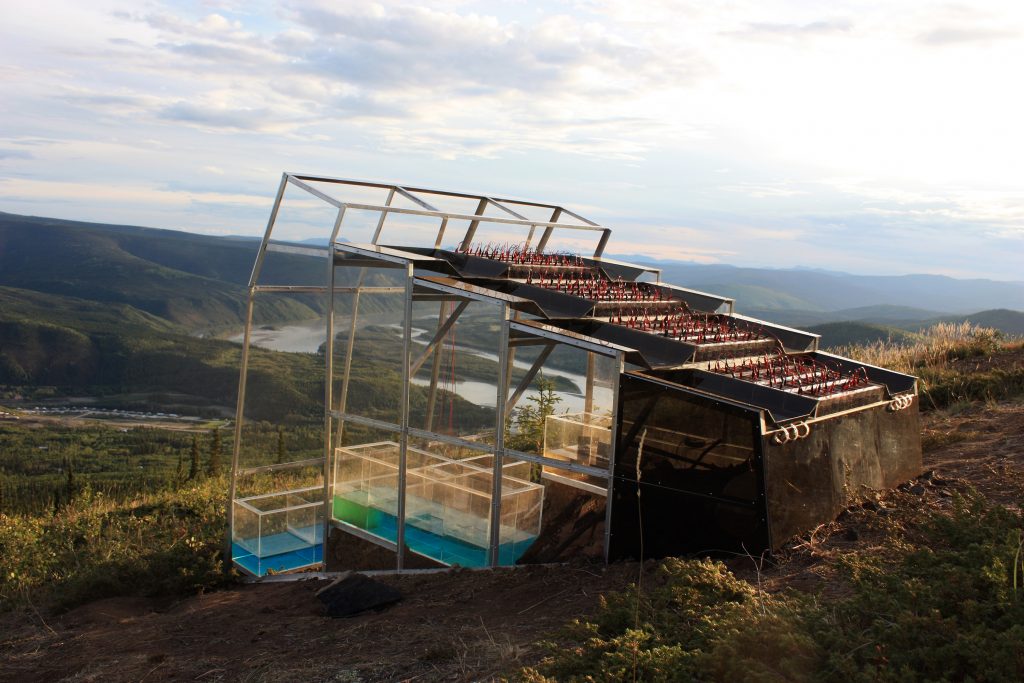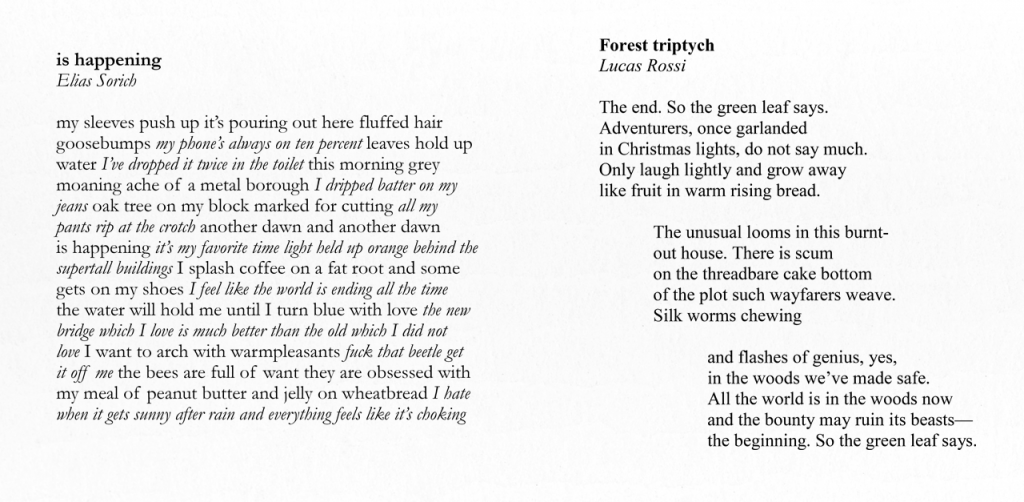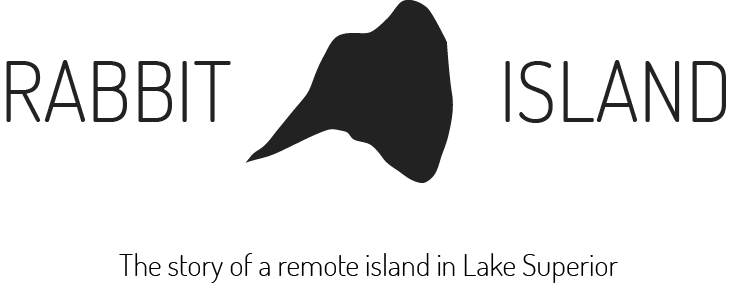Congratulations 2019 Residents
We are excited to announce awarded residencies for the 2019 Rabbit Island Residency program. We awarded three successful applications featuring a total of six artists. Each will live and work on Rabbit Island this summer.
Colin Lyons
Elias Sorich and Lucas Rossi
The Religion (represented by Lindley Elmore, Morgan Vessel, and Keegan Van Gorder)
Our 2019 open call received 253 applications representing individuals and groups from 25 countries.
A six member selection committee comprised of Rabbit Island alumni and administrators democratically chose the awarded residents. During February and March each committee member read application texts, reviewed each work submitted, and followed each web link provided. On many occasions members also independently researched previous works online.
Following this process the committee met via videoconference to discuss applications in detail and initially shortlisted 52 applications. After further discussion a refined list of 17 was selected. The committee then took two additional days to review those collectively shortlisted applications and chose 13 finalists who were interviewed for 25 minutes during videoconferences in late March. Finally, the committee members voted anonymously for their top three applications, resulting in the awarded residency positions. The Rabbit Island Foundation is extremely fortunate to have such a committed group of alumni who enrich and advance the residency program.
Below we are sharing the awarded proposals in full. We do so in the interest of transparency, archival intention, and to provide insight into the quality, critical nature, and ambition of the proposals we receive. We do so also fully understanding that the questions, research, and work put forward will likely change in time for each artist before, during, and after the residency. We look forward to working with the residents as their ideas evolve.
Since its inception in 2011 the Rabbit Island Residency program has awarded 26 supported residencies and hosted over 70 collaborators. Our open calls have received over 1300 applications highlighting artwork and ideas that critically engage issues of conservation and natural spaces. With the contemporary challenges society faces we are excited to have Rabbit Island’s residents contribute their research and work to this larger conversation.
The committee extends a sincere thank you to all the applicants. This year’s selection was extremely difficult given the large number of thoughtful proposals supported by exemplary work. While we regret not being able to offer more residency positions, it is an honor to be working with the following artists over the next year.
The 2019 Rabbit Island Residency Selection Committee
Julieta Aguinaco, 2017 Resident
Sarah Demoen, 2017 Resident
Jasmine Johnson, 2017 Resident
Calvin Rocchio, 2018 Resident
Rob Gorski, M.D., Cofounder
Andrew Ranville, Cofounder

Colin Lyons
Biography
Colin Lyons was born in Windsor, Ontario in 1985, and grew up in Petrolia: ‘Canada’s original oil boomtown’. This experience has fueled his interests in industrial obsolescence and sacrificial landscapes. Lyons received his BFA from Mount Allison University (2007) and MFA in printmaking from University of Alberta (2012). He has presented 25 solo exhibitions and site-specific installations across Canada and the United States, as well as in group exhibitions internationally. His projects have been supported by the Canada Council for the Arts, Conseil des Arts et des Lettres du Québec, Alberta Foundation for the Arts, The Elizabeth Greenshields Foundation, and the National Endowment for the Arts. In 2016, he was awarded the Grant Wood Fellowship at The University of Iowa, and in 2013 he participated in the Kala Art Institute Fellowship in Berkeley. He currently lives in Binghamton, New York, where he is an assistant professor at Binghamton University (SUNY).
Artist Statement
My recent work considers preservation in an age of planned obsolescence and resource depletion. Deeply rooted in historical printmaking processes, these projects consider sacrificial landscapes through the lens of geo-engineering, urban renewal and brownfield rehabilitation. My experiments evoke an alchemical creation of time, memory and historical aura, as I propose new models for how we might memorialize and honor our collective history by re-integrating ritual and enactment into acts of remembrance.
Recently, I have begun developing a printmaking-based installation titled The Laboratory of Everlasting Solutions, in which I adopt the role of a practical alchemist, exploring the intersections between alchemical philosophies and contemporary climate-engineering technologies. The resulting laboratory will imagine fictitious and highly impractical prototypes, which allow brownfield remediation efforts to fuel monumental ideas about our collective future. The laboratory’s architecture may hover between a medieval alchemist’s laboratory, contemporary sustainable infrastructure, and ruin folly.
Proposal
I hope to work in the isolation of Rabbit Island to immerse myself in a 4-week hermetic durational performance, scribing an acid-based illuminated manuscript that will become a core part of The Laboratory of Everlasting Solutions. Throughout the Cold War, cloud seeding and weather modification programs gained broad bipartisan interest and concern, leading to several commissions on the technology. Throughout the residency, I will work to transcribe one of these congressional documents using a diluted solution of sulfuric acid as my pigment, punctuated with illuminated diagrams of Solar Radiation Management proposals. While the texts and images produced through this ritual performance will initially be invisible, they will reveal themselves over the next several decades as the acids discolor and eat away the paper, and the urgency around these technologies intensifies. The opportunity to produce this work within an isolated and unbuilt environment will help to inform the question of what exactly we strive to return to or approximate within a techno-solutionist future; a stark contrast with the sacrificial landscapes I typically work in. Throughout the residency, a daily ritual of exploring, collecting, and sampling will be followed by the hermetic and esoteric process of nightly transcription.
At its core, the science of geo-engineering attempts to mimic, accelerate, or amplify natural processes of carbon reduction using highly invasive means. These strategies form a dystopian contingency plan which, employed alongside mitigation efforts, strive to preserve a close approximation of our present ecosystem. However, instead of practical geoengineering prototypes, The Laboratory will present a future-oriented satire: time capsules which project a vision of the near future based on the realities and anxieties of the present. In their quest to transform base materials, alchemists sought transmutation towards a purer, more divine state. The notion that we might find salvation in the fine balance of strategic chemical spills defies belief in the same way the quest for a philosopher’s stone once did. However, within this critical debate, my role as an alchemist enables me to embrace impossibility, proposing prototypes which are symbolic, rather than practical, so that we may ponder this dilemma through a more philosophical lens.

Elias Sorich and Lucas Rossi
Biography
Elias Sorich is a poet based in New York City, where he is pursuing a M.F.A. from Columbia University. He will be working as the Print Managing Editor of the Columbia Journal over the next years, and is currently a newsletter tinkerer in an administrative office, and a once-a-week writing teacher for a class of Armenian high school students. During the summer he will be traveling to Yerevan, Armenia to teach a workshop based on Folklore, Fairytale, and Myth. His work has been published in a handful of small but pleasant magazines.
Lucas Rossi is a writer living in Minneapolis, Minnesota. He will be pursuing an M.F.A in poetry at the University of Oregon beginning in the Fall of 2019. He works in a number of mediums in the arts, with projects involving poetry, prose, visual art, and music. He also really likes bugs.
Artist Statement
Elias’ work focuses largely on internal states of being, on the flux of emotions, and the instability of thoughts as they stew in the midst of living. I write to these questions with external gestures, I blend the borders between perceiving and being. The world inside is tied inexorably to the world of salamanders under rocks, toads overlooking the backyard stream. In this soup of internal-external figuring, I am a presence, a present figure–not a primary actor.
Lucas’ poetry involves both traditional formal aesthetics and a more contemporary green poetics, emanating from vegetarian upbringing as well as latent guilt in certain childhood experiences: failing to keep moths that I brought home from class alive, or carelessly flushing hundreds of ants out of our house’s concrete patio with a garden hose. Those microcosmic images, coupled with a larger awareness of impending climate catastrophes, define the focus of my work.
Proposal
Through a series of engagements with the bug life natural to the ecosystem of Rabbit Island, the two poets in this collaborative group will write towards the biomass that exists in, around, and beneath the ground they walk on.
From John Donne’s “The Flea,” to Heide Erdrich’s “Stung,” to Michael Dickman’s “Flies” there is something of a history in poetry of using insects to represent the human soul, its vices and virtues, and human thought processes, its pits and heights. Present in our work to date is a respect for, and embrace of, this relationship, and paramount to our aims for the Rabbit Island residency is the desire to embrace it further. We will explore new complexities of this literary relationship, particularly those brought on by the threat of global climate change, and the possibility of mass insect extinction. Through the opportunity to write in and around an environment at least mostly unadulterated, but that is in some larger sense threatened, we will explore how the subtle things in the natural world that make it function, impact the process of internal human undercurrents. What changes between the human and the nonhuman when the hyperobject of global warming casts a long shadow?
Our work during this residency will inspect the notion of the ecological catalogue. How do you make a living register? Account for the vitality of a species? What is lost when data does not retain the felt sense of inter-species contact? As two poets who write in harmony and conflict with one another, we will make a prismatic exploration of a freshly threatened population. Through our words, written on paper and expressed in other mediums, we will go after those elements of living left uncaptured in the environmental accounting of insect life. This will not be a simple chronicling of the insect population, but an attempt to create work that engages with these vital creatures in a more holistic sense. We will write towards them and away from them, a hum in the background, a bite on the skin, a leftover wing.

The Religion (represented by Lindley Elmore, Morgan Vessel, and Keegan Van Gorder)
Biography
The Authority Body of The Religion has appointed three trusted members of The Unclogged to practice and pass on our sacred teachings — Lindley Elmore, Morgan Vessel, and Keegan Van Gorder. The three have since shed their academic accolades and moved past their box topics (Sociology, Fine Art) and towards the One True Only Truth. Since their unclogging, their qualifications and markers of success are almost too vast to mention — practicing advanced ceremonies such as Nail Clipping Ceremonies, Grump Code, Fork Follow, Opera Plant Clipping, Exercises in Inefficiency, Housewarming Ceremonies, Selfishness Ceremony, Black Walnut Ceremony, Museum Walking Ceremony, and Making an Old Place New. While Lindley, Morgan, and Keegan live and operate in Minneapolis, The Religion continues to seek new members, collaborators, and dib-dabblers as they grow their body globally.
Artist Statement
The Religion is a project and community of people who are seeking to cultivate curiosity and goof through the creation of new events and experiences. The Religion is a set of beliefs that prioritizes Goofwork, making the profane sacred, materializing ideas and the use of Ceremony as a medium. Ceremony, the Religion’s core practice, helps us access the divine, asks us to try new ways of spending time, lets us re-examine our personal priorities, aims to stretch our stone-set comfort routines and encourages us (The Unclogged) to relearn how to value an experience for the sake of an experience. Ceremony is a tool that allows us to externalize questions, personal themes and new ideas through experiences that are deliberate, extensively planned step-by-step events or spontaneous, wild, improvisational idea-actions.
Proposal
The Religion’s practice asks us to consider our relationship to our socio-cultural environment and physical landscape. Our use of Ceremony encourages inquisitiveness and play through the investigation of place and our position within a larger regional space and social context. We’ve investigated community spaces through public events such as Silent Midnight Trash Bag Walk and Freedom of Information Booth at MSP-St. Paul International Airport. Our work seeks to disrupt the regular-ness of routines and everyday spaces (park / airport) through thoughtful, provocative new styles of re-engagement using movement, constructed legitimacy, ceremony and goof. Since the practice and creation of Ceremonies are heavily informed by our own context and physical environment, much of our ceremonies are centered around urban landscapes (Trash/Treasure Goose Chase, Landscape Investigations I and II, Museum Walking Ceremony), the modern workplace (Undercover Worse than Normal Employee), and happenings in our own lives (Heartbreak Parade, Tinder Ceremony, Ceremony for Fresh Eyes in an Old Place, Ceremony for Moving Out). Experience in past residencies – putting ourselves in new and different places has allowed us to engage new site-specific ideas and produce ceremonies from those locations (Cracking the Eggshell of Winter from our first winter residency in Minneapolis). We want to continue this focused collective investigation of local space in order to write new ceremonies, create community events and develop ideas that are inspired by and extracted from place. We wish to seek out spaces different from what we’ve been afforded in the past in order to engage, and export new topics and questions interpreted from that environment.
Through this residency we want to explore and produce new Ceremonies of differing scales. We wish to compose small ceremonies for our intimate collection of three, ceremonies for our mailed subscribers, and a final site-specific ceremony for the community near Rabbit Island. We wish to further investigate what influences and informs our work, especially the context of place. Our goal is to develop a relationship with Lake Superior, create a ceremony that is specific to our experience on Rabbit Island, and host the ceremony as an event for a small group of people.
